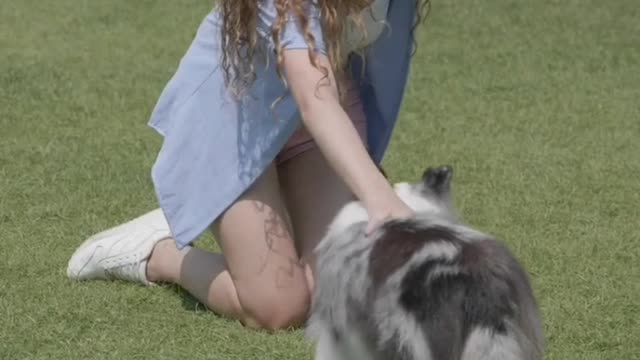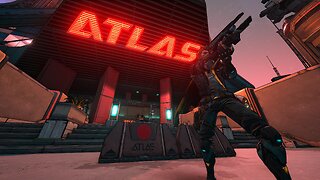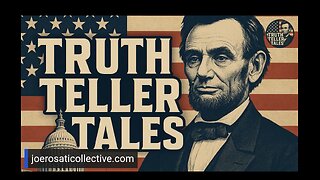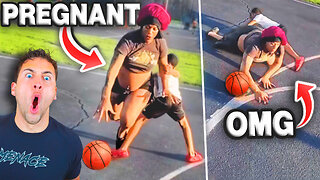Premium Only Content

Dogs are human's good and loyal friend.
A dog breed is a particular strain of dog that was purposefully bred by humans to perform specific tasks, such as herding, hunting, and guarding. Dogs are the most variable mammal on earth, with artificial selection producing around 450 globally recognized breeds. These breeds possess distinct traits related to morphology, which include body size, skull shape, tail phenotype, fur type, body shape, and coat colour. Their behavioural traits include guarding, herding, and hunting, and personality traits such as hypersocial behavior, boldness, and aggression. Most breeds were derived from small numbers of founders within the last 200 years. As a result, today dogs are the most abundant carnivore species and are dispersed around the world.[1]
Montage showing the morphological variation of the dog.
A dog breed will consistently produce the physical traits, movement and temperament that were developed over decades of selective breeding. For each breed they recognize, kennel clubs and breed registries usually maintain and publish a breed standard which is a written description of the ideal specimen of the breed.[2][3][4] Other uses of the term breed when referring to dogs include pure breeds, cross-breeds, mixed breeds and natural breeds.[5]
Prior to the standardisation of dog breeds, there were different types of dogs that were defined by their function. Many different terms were used to describe dogs, such as breed, strain, type, kind, and variety. By the end of the Victorian era, society had changed and so did the role of dogs. Form was given a more prominent role than function.[6] Different types or breeds of dog were being developed by breeders who wanted to define specific characteristics and desirable features in their dogs. Driven by dog shows and the groups that hosted them, the term dog breed took on an entirely new meaning. Dog show competitions included best-in-breed winners, and the purebreds were winning.[6] Breed standards are the reason the breed came to be, and with those standards are key features, including form, function and fitness for purpose. The Kennel Club in the UK was founded in 1873, and was the world's first national kennel club and breed registry.[7] The International Canine Federation was founded in 1911 as a worldwide organisation. Its objective is to bring global uniformity to the breeding, exhibiting and judging of pure-bred dogs. It now has 99 members countries.
An 1897 illustration showing a range of European dog breeds
First dog breeds
Edit
For early depictions of dogs in art, see Early history in art.
Sled dog types, sketched in 1833
Tesem, an ancient Egyptian sighthound
In 2017, a study showed that 9,000 years ago the domestic dog was present at what is now Zhokhov Island, arctic north-eastern Siberia, which was connected to the mainland at that time. The dogs were selectively bred as either sled dogs or as hunting dogs, which implies that a sled dog standard and a hunting dog standard existed at that time. The optimal maximum size for a sled dog is 20–25 kg (44–55 lb) based on thermo-regulation, and the ancient sled dogs were between 16–25 kg (35–55 lb). The same standard has been found in the remains of sled dogs from this region 2,000 years ago and in the modern Siberian Husky breed standard. Other dogs were more massive at 30 kg (66 lb) and appear to be dogs that had been crossed with wolves and used for polar-bear hunting. At death, the heads of the dogs had been carefully separated from their bodies by humans, probably for ceremonial reasons.[8]
Between 3,000 and 4,000 years ago greyhound-type dogs were depicted on pottery and paintings in Egypt and Western Asia. Mastiff-type dogs were kept for guarding and hunting, and short-legged dogs were also bred.[9] Most modern dog breeds are the products of the controlled breeding practices of the Victorian era (1830-1900),[10][11] and the accurate documenting of pedigrees with the establishment of the English Kennel Club in 1873 in imitation of other stud book registries for cattle and horses.[
-
 9:43
9:43
MattMorseTV
1 day ago $26.89 earnedTulsi just DROPPED a BOMBSHELL.
102K154 -
 2:21:13
2:21:13
Tundra Tactical
9 hours ago $0.46 earned"The World's Okayest Gun Live Stream: Reloading Series Announcement & ATF Pistol Brace is Dead
8.42K -
 1:15:42
1:15:42
The Connect: With Johnny Mitchell
1 day ago $9.16 earnedHow Did This Happen? Male Escort Who Testified Against Diddy Exposes LIES About Government's Case
43.5K12 -
 LIVE
LIVE
MSFT__kiLRoy
2 hours agoBorderlands 3 - Atlas Zane (Pt. 17) \\ Guardian Takedown Again...
559 watching -
 49:34
49:34
TruthStream with Joe and Scott
21 hours agoEllen P Lincoln interviews Joe: A deep dive into his history and background. Premiers 7/19
25K3 -
 LIVE
LIVE
EXPBLESS
1 hour agoWhy Am I Awake This Early - Hunt Showdown Madness #RumbleGaming
37 watching -

GamersErr0r
7 hours ago $0.02 earnedBecoming A Support Main | Marvel Rivals
2.97K -
 11:49
11:49
Nikko Ortiz
1 day agoCrazy Instant Karma Clips
65K32 -
 LIVE
LIVE
Lofi Girl
2 years agoSynthwave Radio 🌌 - beats to chill/game to
610 watching -
 20:14
20:14
GritsGG
16 hours agoHackers vs Win Squad! Let's Get it Done!
14.9K